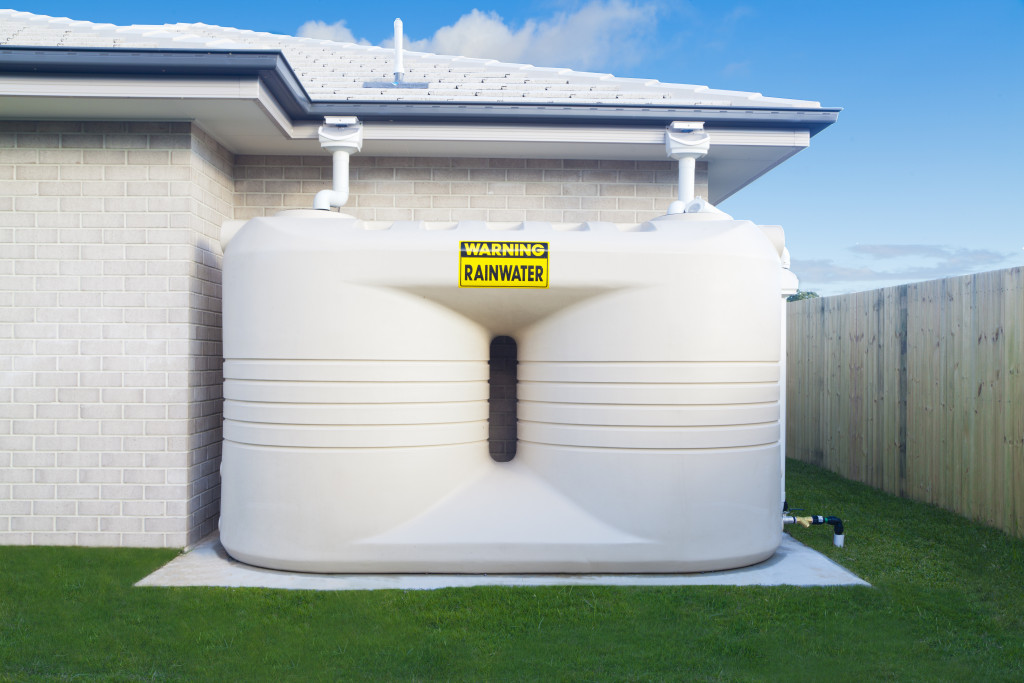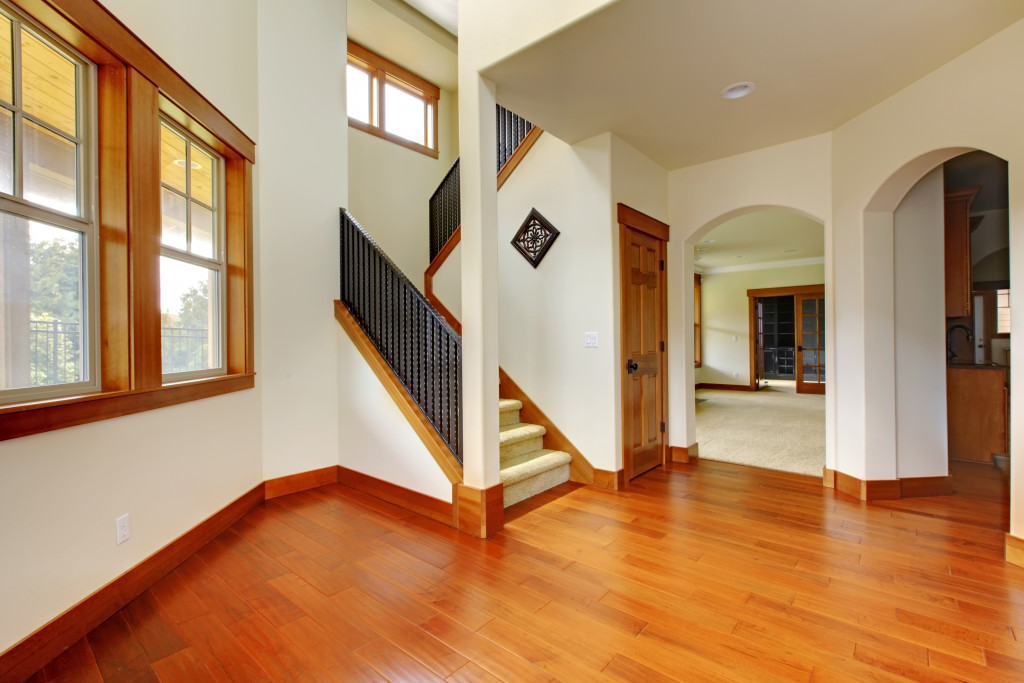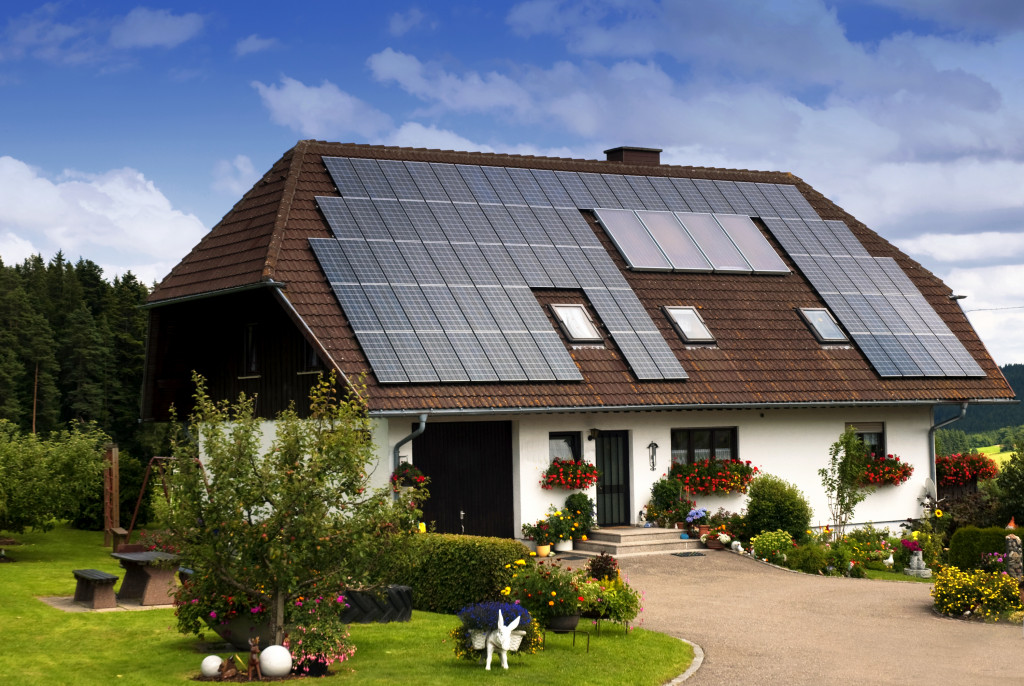- Create a sustainable home by making conscious choices that reduce your ecological footprint
- Upgrade to energy-efficient lighting, heating and cooling systems, and appliances to save money and reduce energy usage.
- Practice water conservation by fixing leaks, installing low-flow fixtures, and harvesting rainwater.
- Choose sustainable materials when upgrading or decorating your home for long-term sustainability.
- Grow your food and conduct responsible energy assessments to enhance a sustainable lifestyle further.
Imagine living in a home that provides a sanctuary for you and your family and is vital to the environment’s well-being. Creating a sustainable home is about making conscious choices that reduce your ecological footprint while enhancing your lifestyle. It’s about choosing the future without compromising on comfort. Embark on a journey through five actionable tips to guide you towards a more sustainable and eco-friendly home.
1. Energy Efficiency Upgrades
Start with the heart of your home’s sustainability—energy efficiency. Swapping out traditional incandescent light bulbs for LED options can significantly reduce your energy consumption.
Here are the types of energy-efficient upgrades that you can have in your home:
Lighting Upgrades
One of the simplest and most effective ways to improve energy efficiency in your home is by upgrading your lighting. Traditional incandescent bulbs are known for being inefficient, as they produce more heat than light. This means you’re paying for heat rather than light when using these bulbs.
Heating and Cooling Upgrades
Heating and cooling account for a significant portion of a home’s energy usage. Upgrading to more energy-efficient options can save money on your utility bills and reduce your carbon footprint.
Insulation Upgrades
Proper insulation is key to keeping your home comfortable and energy efficient. Without proper insulation, warm air can escape in the winter, and cool air can leak out in the summer. As a result, your heating and cooling systems will need to exert more effort in order to uphold a pleasant temperature, consequently resulting in escalated energy expenses.
Appliance Upgrades
Older appliances are less energy efficient, using more electricity and water than newer models. Upgrading to Energy Star-certified appliances can significantly reduce your home’s energy usage and save money on utility bills.
2. Water Conservation Practices

Water is a precious resource, and conserving it is a key element of a sustainable home. Start by fixing leaks—those little drips add gallons of wasted water. Install low-flow showerheads, faucets, and toilets to decrease water use without sacrificing performance.
Consider harvesting rainwater for use in your garden. Setting up a rain barrel is simple and can provide ample water for outdoor plants, reducing your reliance on the main supply. These small changes can make a big impact on your water footprint.
3. Sustainable Materials and Resources

When upgrading or decorating, choose sustainable materials. Look for furniture made from recycled or responsibly sourced materials. This supports sustainable forestry practices and often results in pieces with unique stories and characters.
Think about the long-term lifecycle of the products you bring into your home. Can they be recycled or upcycled? Are they durable enough to stand the test of time? Making smart choices now can help prevent waste, contributing to a more sustainable home environment.
4. Grow Your Own
Embrace the concept of farm-to-table right in your backyard by starting a vegetable garden. Growing your food reduces the carbon emissions of transporting produce from far away, and you can’t beat the taste of something you’ve grown yourself.
If space is limited, don’t despair. Container gardening or joining a local community garden can be just as rewarding. Composting kitchen scraps can provide nutrient-rich soil for your garden, completing the circle of sustainability right at home.
5. Responsible Energy Assessment
Lastly, assessing and understanding your home’s energy consumption is crucial to truly commit to a sustainable lifestyle. One of the most professional ways to do this is by obtaining an Electrical Installation Condition Report (EICR) certificate. This assessment, conducted by certified electricians, can reveal if your home’s electrical systems are running efficiently and safely.
An EICR can also highlight areas where you can improve energy efficiency, whether outdated wiring needs upgrading or potential risks that could lead to energy wastage. By staying informed about the condition of your home’s electrical infrastructure, you’re ensuring safety and paving the way for a more sustainable living environment.
Final Words
Crafting a sustainable home is a rewarding endeavor beyond just being a trend; it’s a lifestyle choice that benefits both the planet and your quality of life. By focusing on energy-efficient upgrades, water conservation, sustainable materials, growing your food, and conducting responsible energy assessments, you’re setting the stage for an environmentally friendly home and a beacon of conscious living. As you implement these changes, take pride in knowing each step is a stride towards a more sustainable future.
